Ultra Anthias Arrival!
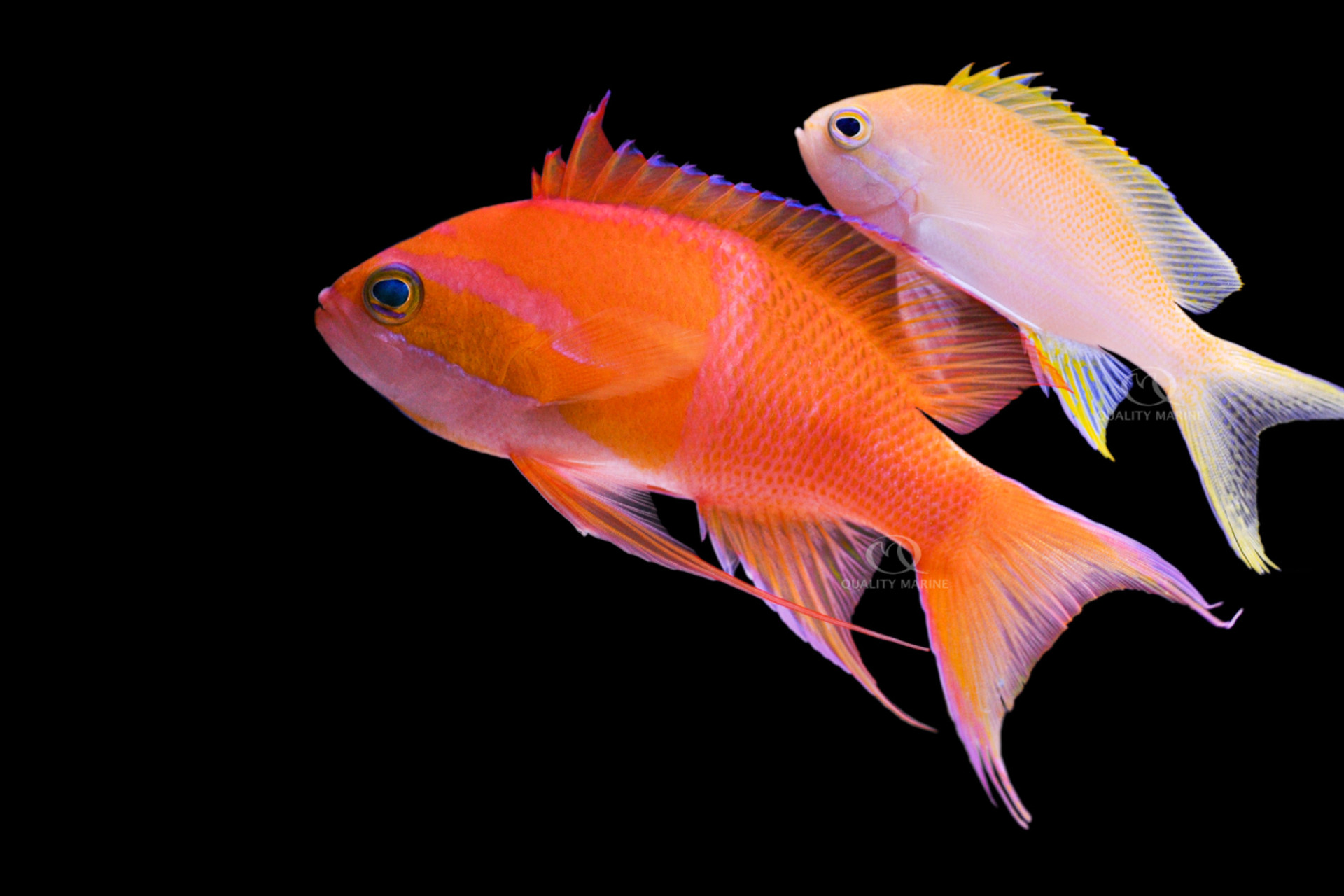
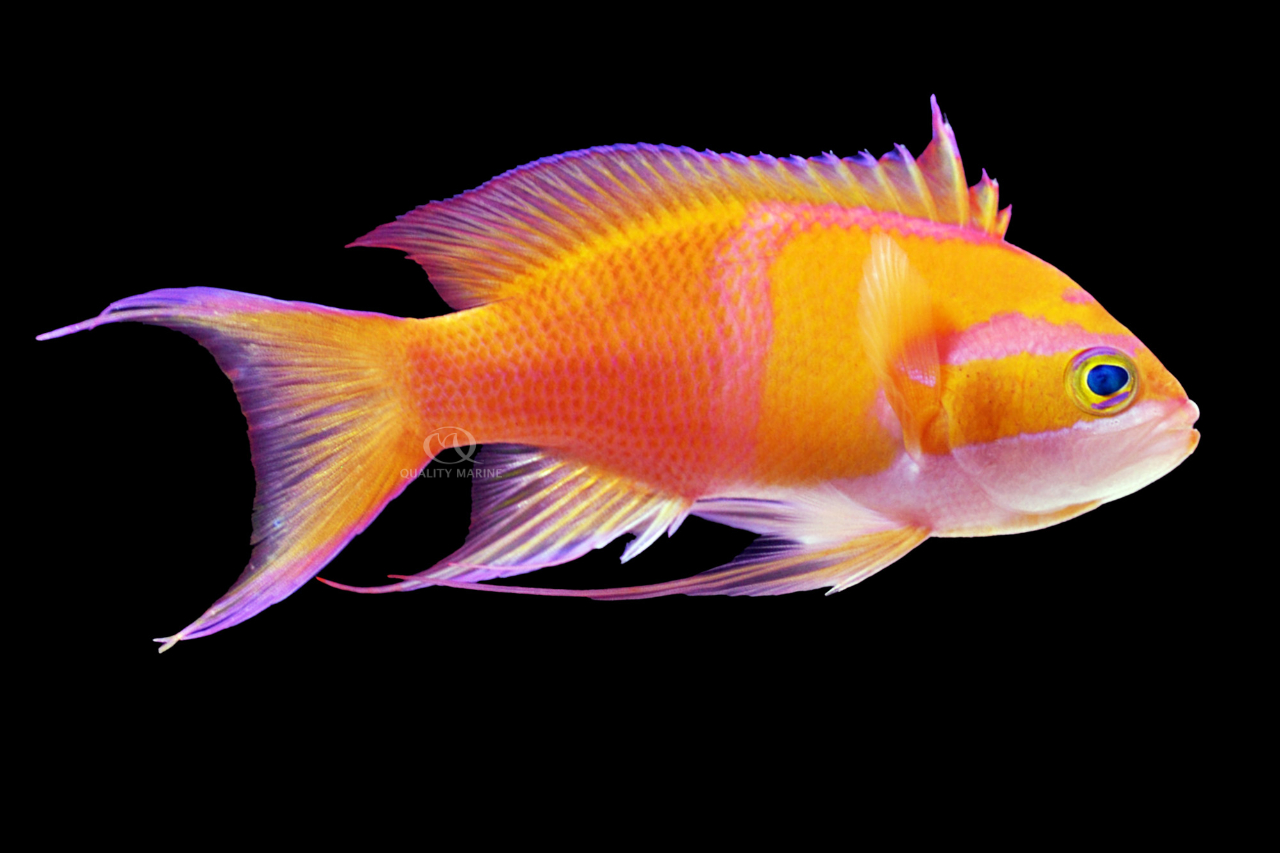 Pseudanthias is a genus full of the most colorful, gorgeous schooling fish ever to swim. Many of them you've seen in your Local Fish Stores or perhaps online in forums or articles. Most of you will have seen Dispar and probably Lyretail Anthias; both make excellent choices for the home aquarium. One fish you probably have not seen, especially in person, is the White Bar Anthias. These are some of the rarest and most beautiful Anthias ever to grace an aquarium. If there was ever some Anthias that you could call dream fish, or showpiece, these are them.
Pseudanthias is a genus full of the most colorful, gorgeous schooling fish ever to swim. Many of them you've seen in your Local Fish Stores or perhaps online in forums or articles. Most of you will have seen Dispar and probably Lyretail Anthias; both make excellent choices for the home aquarium. One fish you probably have not seen, especially in person, is the White Bar Anthias. These are some of the rarest and most beautiful Anthias ever to grace an aquarium. If there was ever some Anthias that you could call dream fish, or showpiece, these are them.
For those of you inclined to full fish-geekyness, White Bar Anthias are known among scientists as Pseudanthias leucozonus. “Pseudanthias” roughly translates from Greek as “false pickerel” and “leucozonus” means “white belt.” They come from very deep water, often collected off rocky reefs in more than 125 feet of water. Their small range also contributes to their rarity in the hobby. They were once thought to be only found off the Izu peninsula in Japan, but another population has since been located in the waters surrounding Bali. (The Osaka aquarium has a mind-blowing walk-through tank that is full of them. Definitely visit if you ever have the chance)
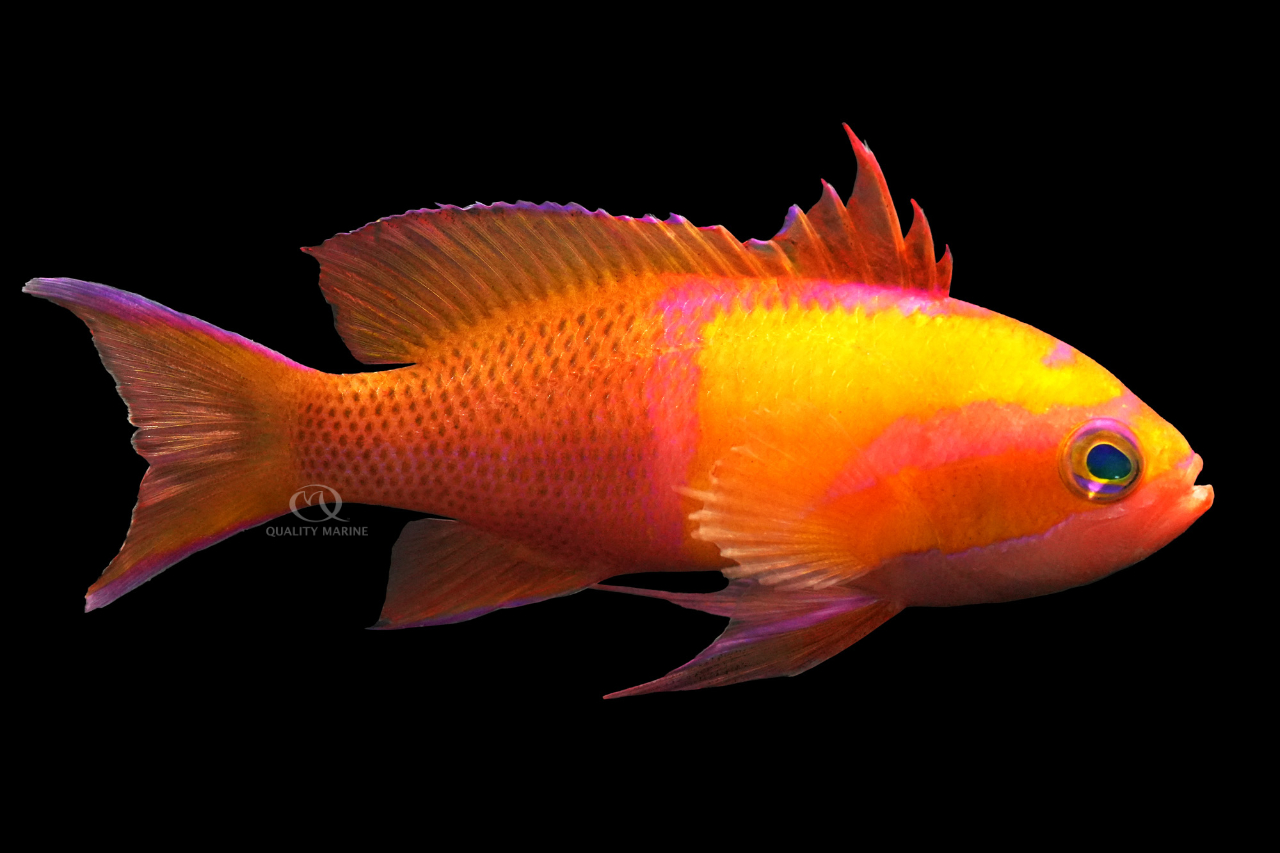 In the wild, they can be found in large, mixed sex (and often mixed specie) groups, where the distribution of males to females has one male for several females. As males leave these groups (get eaten, or die), the largest and most dominant females will segue into males to compensate for overall numbers. This haremic grouping is what we suggest in the home aquarium, though unless you have a display that is hundreds of gallons, you should probably stick to having only one male as they can be very territorial with other male Anthias. White bars will get along with many other fish with a few exceptions. Their flowing tails will become targets for notorious fin nippers like Pufferfish. On the other end of the spectrum, they are boisterous once acclimated and may scare very timid fish (like Firefish and Dragonettes) into hiding.
In the wild, they can be found in large, mixed sex (and often mixed specie) groups, where the distribution of males to females has one male for several females. As males leave these groups (get eaten, or die), the largest and most dominant females will segue into males to compensate for overall numbers. This haremic grouping is what we suggest in the home aquarium, though unless you have a display that is hundreds of gallons, you should probably stick to having only one male as they can be very territorial with other male Anthias. White bars will get along with many other fish with a few exceptions. Their flowing tails will become targets for notorious fin nippers like Pufferfish. On the other end of the spectrum, they are boisterous once acclimated and may scare very timid fish (like Firefish and Dragonettes) into hiding.
An average day for a wild fish is spent constantly eating zooplankton out of the water column. They expend a lot of energy staying suspended in the strong currents around their reef homes and as a result of both these things, will require a lot of feeding. It isn't really feasible for most people to feed their fish all day long, so we suggest at least three feedings daily, and more would be better. They segue over to captive foods well if kept in groups, and even finicky fish can be trained by feeding them thawed foods along with some live brine or mysis. You should also mix a high-quality pellet into this feeding regimen, for a two very good reasons. First, quality Pellets like Nutramar Complete will offer them a broad range of nutrients in a very protein dense package. Second, once the fish are used to pellets, you can utilize an automatic feeder for one or more of their daily feedings, making it much easier to get them as many meals a day as they need. In house, we feed them a mix of these Nutramar Pellets and a full variety of Gamma Foods including Copepods, Artemia, Chopped Prawn, Mysis, and their full suite of enhanced Brine Shrimp.
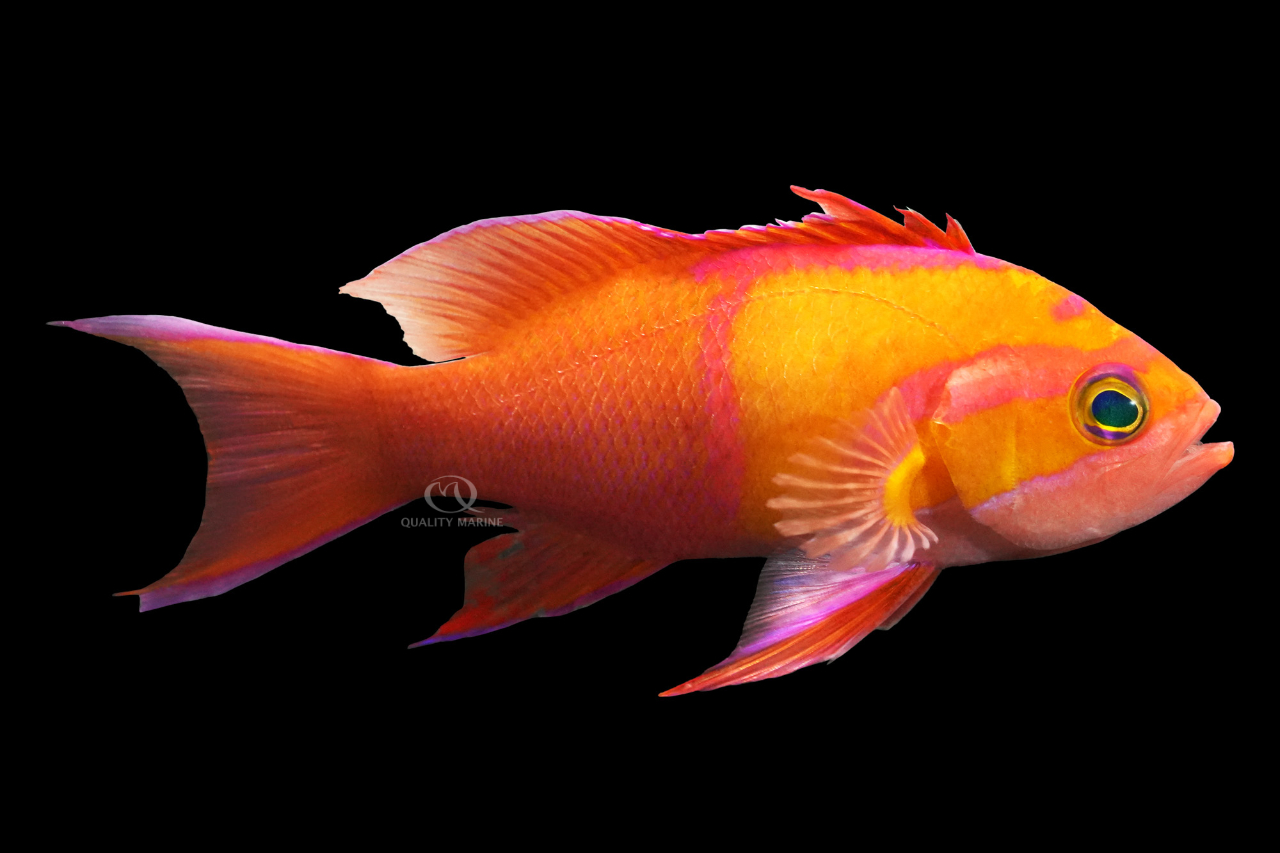 You're reading this and looking at the pictures and if you are anything like us, (and we're betting you are) you're thinking “I need these in my tank right now!” There's a caveat here, this is not a beginner fish. In addition to the demanding feeding schedule, these fish also need a large, well-established tank with rock solid parameters and strong filtration. They come from an environment with little to no fluctuation in temperature or pH that is also super clean! Specific gravity needs to be very solid at 1.025-1.026, pH should not be deviating more than .2 from day to night and never below 8. The temperature is similarly important and should be on the cool side for reef tanks; 70-75 would be ideal, and whatever you choose should not fluctuate at all.
You're reading this and looking at the pictures and if you are anything like us, (and we're betting you are) you're thinking “I need these in my tank right now!” There's a caveat here, this is not a beginner fish. In addition to the demanding feeding schedule, these fish also need a large, well-established tank with rock solid parameters and strong filtration. They come from an environment with little to no fluctuation in temperature or pH that is also super clean! Specific gravity needs to be very solid at 1.025-1.026, pH should not be deviating more than .2 from day to night and never below 8. The temperature is similarly important and should be on the cool side for reef tanks; 70-75 would be ideal, and whatever you choose should not fluctuate at all.
A google search will show you a few different max sizes for this fish, the largest that we commonly read or hear about is five inches long, but a White Bar Anthias this large would be a statistical outlier. A much more common adult size is around three to three and a half to four inches. With this in mind, if you are thinking about keeping a single male, we'd recommend at least a 75-gallon tank, but for a group you should double this number to 150 gallons. With White Bar Anthias, more is always better; more room, more water, more stability. They'll be happiest in a ton of flow, think 10x-20x the tank volume in total. They are used to very strong, consistent flow, and will relish this in the home aquarium. When this high flow is taken into account with the lower temperature these like, you'll also achieve a nice high dissolved oxygen level, which is good for pretty much everything in the aquarium. Rockwork should offer plenty of cover, and places to hide, but the aquarium should also have a lot of open space for these fish to swim in. Anthias can hit a fair turn of speed, so cover this display so you don't end up with your super rare, showpiece White Bar Male on the floor!
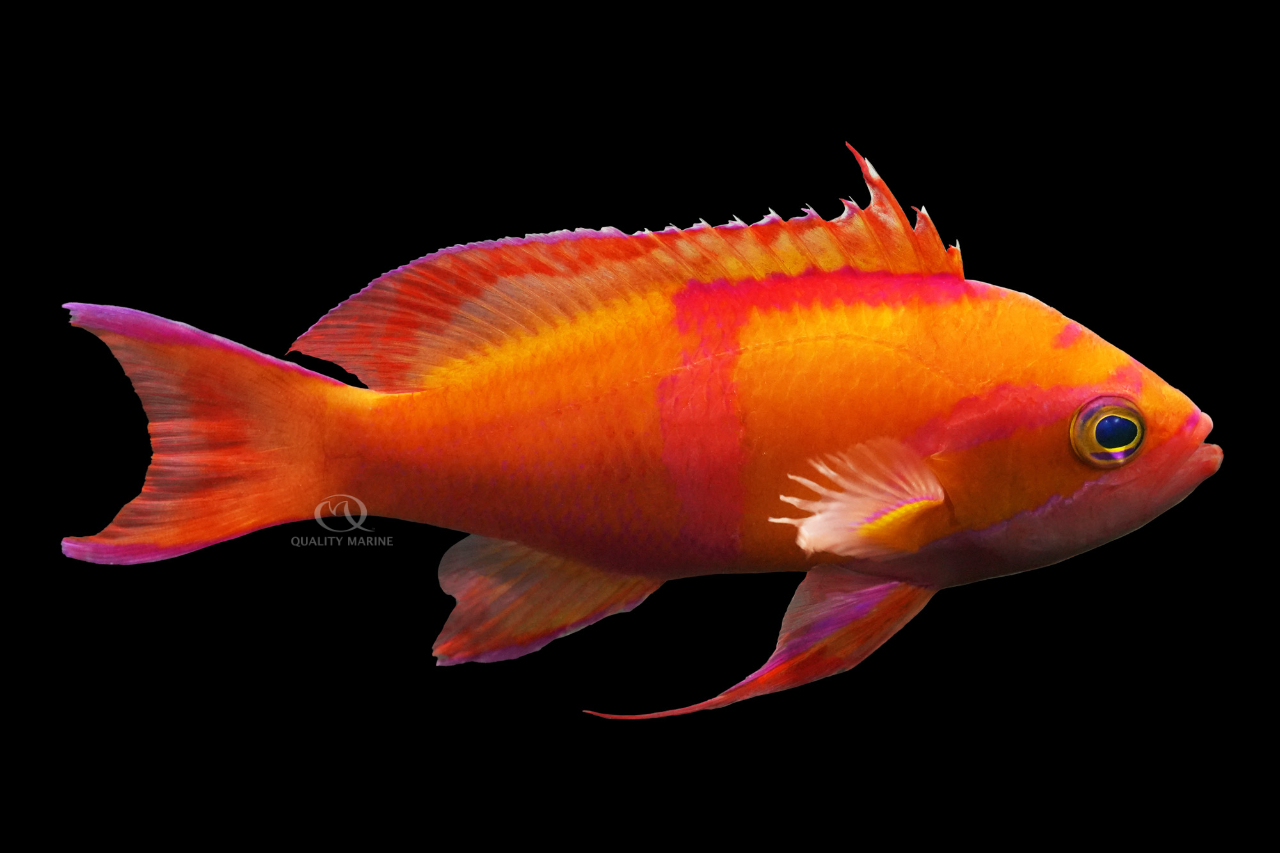 If you and your tank are ready for the jump into ultra-Anthias, we'd like to present the White Bar for your consideration. As good as these pictures look there is nothing like seeing these fish in person, no matter how good the photograph or video is, it just doesn't do this animal justice. They are STUNNING and the capital letters are warranted. Yes, we're yelling it. They offer rarity, interactive activity and gorgeous looks like almost nothing else that swims. Want it? You know what to do. Your LFS is waiting for you to ask them about White Bar Anthias from Quality Marine today.
If you and your tank are ready for the jump into ultra-Anthias, we'd like to present the White Bar for your consideration. As good as these pictures look there is nothing like seeing these fish in person, no matter how good the photograph or video is, it just doesn't do this animal justice. They are STUNNING and the capital letters are warranted. Yes, we're yelling it. They offer rarity, interactive activity and gorgeous looks like almost nothing else that swims. Want it? You know what to do. Your LFS is waiting for you to ask them about White Bar Anthias from Quality Marine today.